
Advanced Theory and Simulations
Scope & Guideline
Empowering Research Through Advanced Numerical Analysis.
Introduction
Aims and Scopes
- Computational Materials Science:
The journal emphasizes research that utilizes computational methods to explore materials properties, including electronic, optical, and thermodynamic characteristics. This includes studies on novel materials such as perovskites and transition metal dichalcogenides. - Machine Learning Applications:
A significant focus is on the application of machine learning techniques to enhance predictive modeling in various domains, such as materials science, battery technology, and solar cell efficiency. - First-Principles Calculations:
The use of first-principles calculations, particularly density functional theory (DFT), is prevalent in the journal, allowing for detailed insights into electronic structure and material properties. - Energy Systems and Sustainability:
Research on energy-related topics, especially in optimizing solar cells and improving energy storage systems, is a crucial area, reflecting a commitment to advancing sustainable technologies. - Fluid Dynamics and Transport Phenomena:
The journal includes studies on hydrodynamics, including simulations of fluid behavior in various contexts, which are essential for applications in engineering and environmental science. - Nanoscale and Quantum Simulations:
Research that delves into nanoscale phenomena and quantum mechanics is highlighted, showcasing the journal's focus on cutting-edge theoretical and computational approaches.
Trending and Emerging
- Integration of AI and Machine Learning:
The increasing incorporation of AI and machine learning techniques in simulations and modeling signifies a trend towards smarter, data-driven approaches that enhance predictive capabilities across various fields. - Perovskite Solar Cells Research:
Research focusing on perovskite solar cells continues to gain momentum, with a growing interest in optimizing their efficiency and stability through advanced simulations and modeling. - Quantum Computing and Simulations:
With advancements in quantum computing, there is an emerging trend toward exploring quantum simulations, which promise to revolutionize the way complex systems are modeled. - Sustainable Energy Solutions:
A strong emphasis on sustainable energy solutions, particularly in the context of improving solar cells and energy storage technologies, reflects a growing awareness of environmental challenges. - Advanced Nanomaterials and Applications:
There is a notable increase in studies focusing on advanced nanomaterials, including their synthesis, characterization, and potential applications in various technological domains. - Interdisciplinary Approaches:
The journal is witnessing a trend towards interdisciplinary research that combines insights from physics, chemistry, and engineering to address complex scientific problems.
Declining or Waning
- Classical Simulation Techniques:
There has been a noticeable reduction in the publication of studies utilizing classical simulation techniques, such as molecular dynamics without the integration of machine learning or advanced computational methods. - Experimental Validation Studies:
Papers that primarily focus on experimental validation of theoretical models are less frequent, indicating a potential shift towards purely computational approaches without extensive experimental corroboration. - Traditional Analytical Methods:
Research employing conventional analytical methods for data analysis and modeling has diminished, as newer, data-driven techniques gain traction. - Generalized Theoretical Frameworks:
There is a decline in the use of broad theoretical frameworks that do not incorporate advanced computational strategies, as the journal increasingly favors more specific, application-driven studies.
Similar Journals
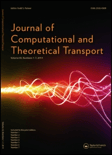
Journal of Computational and Theoretical Transport
Bridging Disciplines, Transforming Transport KnowledgeJournal of Computational and Theoretical Transport, published by Taylor & Francis Inc, is a dedicated platform for researchers and professionals in the fields of applied mathematics, mathematical physics, and transportation. Since its inception in 2013, this journal has offered valuable insights into computational and theoretical approaches to transport phenomena, bridging various scientific disciplines and fostering interdisciplinary collaborations. While the journal currently holds a Q4 ranking in categories such as Applied Mathematics and Statistical and Nonlinear Physics, it aims to elevate the quality of research published in these areas through rigorous peer review and a commitment to advancing knowledge. The university-sponsored studies, which cover a wide spectrum of transport models and their applications, make it a vital resource for students and academics alike. Positioned within the United Kingdom, this journal continues to attract a global readership interested in the latest developments and theoretical advancements in transportation science. With no open access option, readers can expect high-quality, curated content that reflects ongoing research trends and methodologies, contributing to the broader field of physics and engineering.
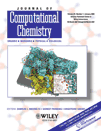
JOURNAL OF COMPUTATIONAL CHEMISTRY
Exploring Innovative Solutions in Chemical ResearchThe Journal of Computational Chemistry, published by Wiley, is a premier platform in the fields of computational chemistry and computational mathematics. Established in 1980 and continuing through 2024, this journal serves as an essential resource for researchers, professionals, and students seeking to advance their understanding and application of computational methods in chemical research. With a commendable impact factor and ranking in the top quartile (Q2) for both Chemistry and Computational Mathematics, it boasts impressive Scopus rankings—22nd out of 189 in Computational Mathematics and 102nd out of 408 in General Chemistry, indicating its strong influence within these scientific communities. While it does not offer open access, the Journal of Computational Chemistry remains a vital venue for disseminating groundbreaking research and fostering collaboration in the computational science landscape. For those at the forefront of innovation, staying abreast of the latest findings published here is indispensable for advancing their work in theoretical and applied chemistry.
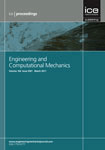
Proceedings of the Institution of Civil Engineers-Engineering and Computational Mechanics
Advancing the Frontiers of Civil Engineering and MechanicsProceedings of the Institution of Civil Engineers - Engineering and Computational Mechanics is a prestigious journal published by Emerald Group Publishing Ltd, dedicated to advancing the fields of civil and structural engineering, as well as mechanics of materials. With an ISSN of 1755-0777 and E-ISSN 1755-0785, this journal serves as a critical platform for disseminating innovative research and practical insights from 2009 through 2024. As part of its commitment to academic rigor, it is categorized in the Q4 quartile for both civil and structural engineering and mechanics of materials, reflecting a unique position in the scholarly community. The journal is essential for professionals, researchers, and students aiming to stay informed on current trends, methodologies, and applications in engineering and computational mechanics. By engaging with this publication, readers gain access to crucial findings that contribute to the advancement of infrastructure and materials science, vital for developing resilient and sustainable engineering solutions.
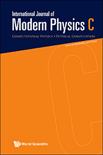
INTERNATIONAL JOURNAL OF MODERN PHYSICS C
Connecting Scholars to the Latest in Physics ResearchINTERNATIONAL JOURNAL OF MODERN PHYSICS C, published by WORLD SCIENTIFIC PUBL CO PTE LTD, is a pivotal platform for disseminating groundbreaking research in the fields of computational theory, mathematical physics, and statistical physics. With an ISSN of 0129-1831 and an E-ISSN of 1793-6586, this esteemed journal, based in Singapore, serves a global audience of researchers and professionals who are dedicated to pushing the boundaries of knowledge in modern physics. The journal's rigorous selection process ensures the inclusion of high-quality articles that advance the understanding and application of complex theoretical concepts. Currently, the journal holds a commendable Q3 quartile ranking across several categories, including Computational Theory and Mathematics and Statistical and Nonlinear Physics, reflecting its influence and relevance in the academic community. Covering a wide array of topics from 1996 to 2024, the INTERNATIONAL JOURNAL OF MODERN PHYSICS C is not just a repository of research; it is a critical resource for students and scholars aiming to stay at the forefront of modern scientific inquiry.
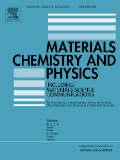
MATERIALS CHEMISTRY AND PHYSICS
Pioneering Discoveries in Condensed Matter PhysicsMATERIALS CHEMISTRY AND PHYSICS is a leading peer-reviewed journal published by Elsevier Science SA, focusing on the intersection of materials science and condensed matter physics. With an esteemed impact factor and a distinguished reputation in its field, this journal holds a Q1 ranking in Condensed Matter Physics and a Q2 ranking in miscellaneous Materials Science categories as of 2023. Spanning over three decades since its inception in 1983, it provides a vital platform for researchers, professionals, and students to disseminate cutting-edge findings and innovations in materials characterization, properties, and applications. The journal is indexed in Scopus, boasting impressive rankings that reflect its commitment to publishing high-quality research. Although it does not currently offer an Open Access option, it remains an essential resource for those seeking to stay at the forefront of materials chemistry and physics.
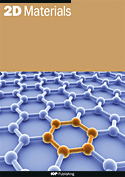
2D Materials
Leading the Charge in 2D Materials Innovation2D Materials is a leading peer-reviewed academic journal published by IOP Publishing Ltd, dedicated to advancing the field of two-dimensional (2D) materials research. Since its inception in 2014, the journal has rapidly become a primary platform for disseminating cutting-edge findings across a broad spectrum of disciplines, including Chemistry, Condensed Matter Physics, Materials Science, and Mechanical Engineering, successfully securing a top-tier quartile ranking (Q1) in these fields as of 2023. With an impressive Scopus ranking—placing it in the top 7% in Mechanical Engineering and top 8% in Condensed Matter Physics—this journal exemplifies excellence in scholarly communication. The journal offers diverse access options to cater to a global audience, underscoring its commitment to fostering collaboration and innovation within the scientific community. As researchers, professionals, and students continue to explore the vast potential of 2D materials, 2D Materials remains at the forefront, shaping the future of material science with impactful research and comprehensive reviews.

Computational Particle Mechanics
Unleashing the Power of Particle Mechanics for Tomorrow's ChallengesComputational Particle Mechanics, published by SPRINGER INTERNATIONAL PUBLISHING AG, is a leading journal dedicated to advancing knowledge in the interdisciplinary fields of computational mechanics, civil engineering, and fluid dynamics. With an impressive impact factor reflecting its high-quality research publications, this journal maintains a strong presence in the academic community with a Q1 ranking in categories such as Civil and Structural Engineering, Computational Mechanics, and Numerical Analysis as per the latest 2023 evaluations. Researchers and professionals benefit from the journal's commitment to open-access options, promoting wider dissemination of groundbreaking studies. Operating under the Swiss publishing house since 2014, Computational Particle Mechanics aims to foster innovation through the exploration of particle-based methods and simulations, making significant contributions to methodologies within computational mathematics and modeling. As the journal continues to evolve until its converged years end in 2024, it stands as a vital resource for those looking to enhance their expertise in dynamic modeling and simulation techniques.

Particuology
Shaping Tomorrow's Innovations in Particle TechnologyParticuology is a premier international journal published by Elsevier Science Inc, focusing on the critical advancements in the fields of *Chemical Engineering*, *Condensed Matter Physics*, and *Materials Science*. As a Q2 journal in its respective categories for 2023, it offers a platform for researchers to disseminate their findings and engage with the latest developments in particle technology and related areas. With an impressive Scopus rank of 71/273 in General Chemical Engineering and 122/463 in General Materials Science, Particuology is positioned at the forefront of scientific inquiry and innovation. The journal encourages open access, ensuring that groundbreaking research is available to a global audience, thus fostering collaboration and knowledge sharing among academia and industry professionals. With a publication history dating back to 2008, Particuology continues to shape the future of particle science and engineering by providing rigorous peer-reviewed content that reflects the highest standards of academic excellence.

Engineering Applications of Computational Fluid Mechanics
Transforming Theory into Practice in Fluid MechanicsEngineering Applications of Computational Fluid Mechanics is an esteemed journal published by Taylor & Francis Ltd that serves as a vital resource for researchers, professionals, and students in the field of fluid mechanics and its computational applications. With an ISSN of 1994-2060 and an E-ISSN of 1997-003X, this journal has established its reputation through its rigorous peer-review process and commitment to Open Access since 2015, facilitating widespread dissemination of cutting-edge research. Based in the United Kingdom, the journal is indexed in leading databases and has achieved a significant impact in its categories, ranking in the top quartile (Q1) for both Computer Science (miscellaneous) and Modeling and Simulation as of 2023. Notably, its Scopus rankings place it in the top 4% of Mathematics/modeling and simulation, highlighting its importance in advancing knowledge and innovation within the discipline. The journal invites contributions that explore both theoretical and practical aspects of computational fluid dynamics, fostering collaboration and intellectual growth within the community.

International Journal of Computational Materials Science and Engineering
Bridging theory and practice in computational materials engineering.International Journal of Computational Materials Science and Engineering (ISSN: 2047-6841; E-ISSN: 2047-685X) is a pioneering academic journal published by World Scientific Publishing Co. Pte Ltd, based in Singapore. With a dedicated focus on the intersection of computational techniques and materials science, the journal serves as a crucial platform for disseminating cutting-edge research and developments from both theoretical and practical perspectives. The journal's rigorous peer-review process and commitment to high-quality submissions ensure the publication of influential articles that can significantly impact their fields of study. As of 2023, the journal holds a Q4 ranking in Computer Science Applications and Q3 in Materials Science (miscellaneous), along with notable rankings in other categories such as Mechanics of Materials and Numerical Analysis. Although not Open Access, it facilitates a rich repository of knowledge essential for researchers and professionals aiming to advance their work in computational methods and materials engineering. With converged years from 2012 to 2024, the journal continues to build on its reputation by fostering interdisciplinary collaborations and innovations.